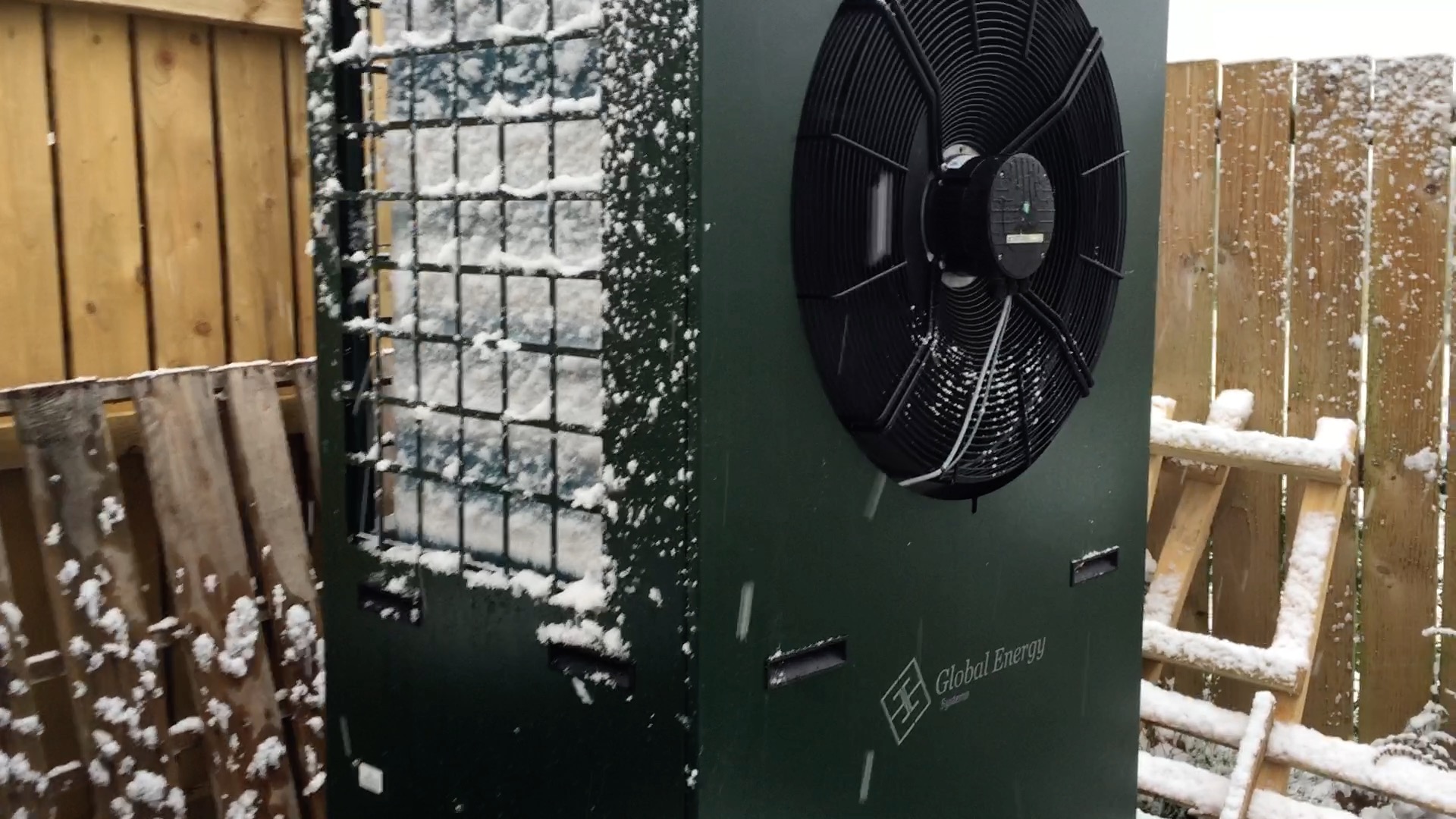Our Caernarfon air source heat pump has now been operational since the spring. It’s time to see how it performed over the course of the past three months as part of our autumn air source heat pump review.
To this point, our air source heat pump has had it easy and has been covered in our summer review.
To see how it performed over the autumn, including a very cold November, please check out this video.
Caernarfon air source heat pump review
For detailed information, please see the breakdown of our running costs below for September, October and November 2019.
| Numbers for Sep, Oct, Nov 2019 | |
|---|---|
| Solar energy produced | 1.152MW |
| Total electricity used (after solar) | 2,787mW |
| Electricity used by ASHP | 2,164mW |
| Coefficient of performance (COP) | 2.5 |
| Electricity cost for ASHP | £298 |
| Oil cost in Sep, Oct and Nov 2018 | £750 |
Based on our electricity tariff, we spent £298 on heating over the past quarter, which equates to just under £100 per month.
We hope you enjoyed this review, and if you’d like to get informed when our winter update is out, please subscribe to our blog and YouTube channel.
UPDATE Feb 19, 2020: the winter review is available here.
EXCLUSIVE OFFER
If you’re interested in an air source heat pump from Global Energy Systems, you can use this code when you contact them and you’ll get £200 off your installation (and we’ll get some Amazon vouchers): GESRFAF000160
